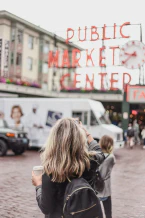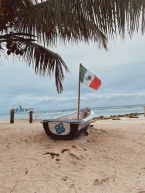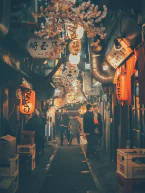Hong Kong Travel Guide: Tips and Insights

Discovering Hong Kong: A Comprehensive Guide to the City of Lights
Hong Kong is a city that captivates the hearts and minds of many with its blend of culture, cuisine, and a thriving financial scene. I’m Jennie from Creative Travel Guide, and today I’m sharing how to plan a trip to this fascinating destination.
When to Visit Hong Kong
The best time to visit Hong Kong is from October to December when the weather is cool and pleasant. Spring, from March to May, can also be enjoyable, but be prepared for sudden storms and foggy days. Bring a sweater or light jacket for the evenings.
Try to avoid visiting Hong Kong during the summer, as it can be incredibly hot and humid, with frequent thunderstorms and typhoons. If you’re looking for something special, consider visiting in February to experience the Spring and Lantern festivals, as well as Chinese New Year. Christmas in Hong Kong is also particularly magical. However, keep in mind that festival periods will see larger crowds and higher hotel prices.
Getting to Hong Kong
As a major global airport, Hong Kong International Airport is well-connected to most cities. From the airport, catch the Airport Express line on the MTR, which departs every 25 minutes from 6 a.m. to 1 a.m. Alternatively, buses from mainland China are available from Guangzhou, Shenzhen, and the Pearl River Delta. Speed trains from Guangzhou, Beijing, Shanghai, and Shenzhen are also options. Make sure to book your tickets in advance using the C-Trip app, especially if you’re traveling during a holiday.
Getting Around Hong Kong
The Star Ferry is a picturesque option for getting around Hong Kong, particularly for crossing the harbor. On land, utilize the MTR stations and the extensive bus network. Taxis are convenient for short journeys or early morning and late-night travel, but be aware of traffic during the day.
Typical Costs in Hong Kong
Accommodation in Hong Kong varies. Budget travelers can find dorm beds for as little as 83 Hong Kong dollars, while private rooms in Chungking Mansion start at 90 Hong Kong dollars. Mid-range hotels cost between 470 and 1,000 Hong Kong dollars, and luxury hotels begin at 1,200 Hong Kong dollars.
Public transportation is affordable, with bus, tram, and Star Ferry tickets costing between 2.50 and 15 Hong Kong dollars. An Octopus card is available for the MTR’s light rail system. Inexpensive meals can be found at cafes and food stores, with sit-down lunch menus starting at 100 Hong Kong dollars and drinks ranging from 25 to 40 Hong Kong dollars.
Saving Money in Hong Kong
While Hong Kong is a fast-paced financial city, there are ways to save money:
- Book everything in advance, as early bookings for hotels and flights are usually cheaper.
- Choose budget airlines like Jetstar, HK Express, or Air Asia and compare prices on Skyscanner and Mwondo.
- Stay in budget accommodations in Chungking Mansion or the Wan Chai neighborhood.
- Use Couchsurfing if you’re on a tight budget and want to meet locals.
- Opt for trams over the MTR and take a bus from the airport instead of a train or taxi.
- Save on attractions by using the CLOOK website for discounted tours and tickets.
Must-See Attractions in Hong Kong
Hong Kong has an array of amazing experiences, such as Victoria Peak, the Big Buddha, Hong Kong Disneyland, Man Mo Temple, Lant
au Island, and the Dragonback Hiking Trail. Don’t forget to visit the Po Lin Monastery, the Avenue of the Stars, and, of course, ride the Star Ferry as well.
As you plan your adventure in Hong Kong, I hope these tips help you create a memorable and enjoyable trip. Make sure to explore beyond the city’s famous skyline and immerse yourself in its rich cultural offerings. Let us know what you’re looking forward to doing most in the comments below, and until next time, stay creative and adventurous!
Conclusion
As you embark on your journey to explore the mesmerizing city of Hong Kong, keep in mind the valuable tips and insights shared in this guide. Whether you’re a seasoned traveler or a first-time visitor, the diverse experiences that Hong Kong offers will undoubtedly leave a lasting impression on you.
From the awe-inspiring skyline to the bustling street markets, the tranquil temples to the thrilling theme parks, Hong Kong is a melting pot of cultures and experiences waiting to be discovered. By choosing the right time to visit, making smart transportation choices, and finding cost-effective accommodations, you’ll be able to make the most of your time in this dynamic city.
As you create your itinerary, don’t forget to venture beyond the usual tourist hotspots and immerse yourself in the local culture. Sample the delectable cuisine, engage with the friendly locals, and appreciate the unique blend of traditional and modern elements that make Hong Kong such a captivating destination.
Ultimately, the memories you create and the experiences you share in Hong Kong will be uniquely your own. Hug the adventure, and allow this incredible city to surprise and delight you at every turn. Safe travels, and enjoy your unforgettable journey to the City of Lights!
1. What are some of the must-try local dishes in Hong Kong?
Dim sum, wonton noodle soup, egg tarts, pineapple buns, and roast goose are just a few of the delicious local dishes that you should try during your visit to Hong Kong. Don’t hesitate to explore local eateries and street food stalls to discover even more culinary delights.
2. Are there any off-the-beaten-path attractions in Hong Kong?
Yes, there are plenty of lesser-known attractions to explore in Hong Kong. Some examples include the Ten Thousand Buddhas Monastery, the street art in Sheung Wan, the quiet fishing village of Tai O, and the hiking trails in Sai Kung Country Park. These hidden gems offer a more authentic experience of Hong Kong’s rich culture and natural beauty.
3. How safe is Hong Kong for travelers?
Hong Kong is generally considered a safe destination for travelers. However, as with any major city, it’s essential to stay vigilant and take precautions to ensure your safety. Be aware of your surroundings, especially in crowded areas, and avoid carrying large amounts of cash or valuables. In case of emergency, dial 999 for police, fire, or ambulance services.
4. Is it easy to communicate with locals in Hong Kong?
While Cantonese is the primary language spoken in Hong Kong, English is also widely spoken and understood, especially in tourist areas and among younger generations. Most signs, menus, and public transportation announcements are in both English and Chinese, making it relatively easy for English-speaking travelers to navigate the city.
5. What type of power outlets are used in Hong Kong, and do I need a voltage converter?
Hong Kong uses a Type G power outlet, which is the same as the United Kingdom. The standard voltage is 220V, so if you are traveling from a country with a different voltage, you may need a voltage converter. It’s also a good idea to bring a universal travel adapter to ensure you can charge your electronic devices during your stay.
















